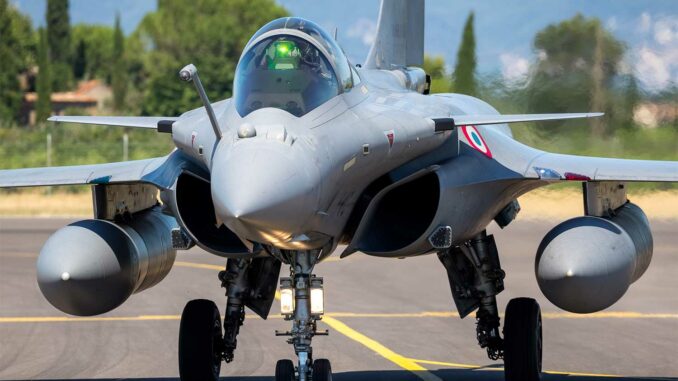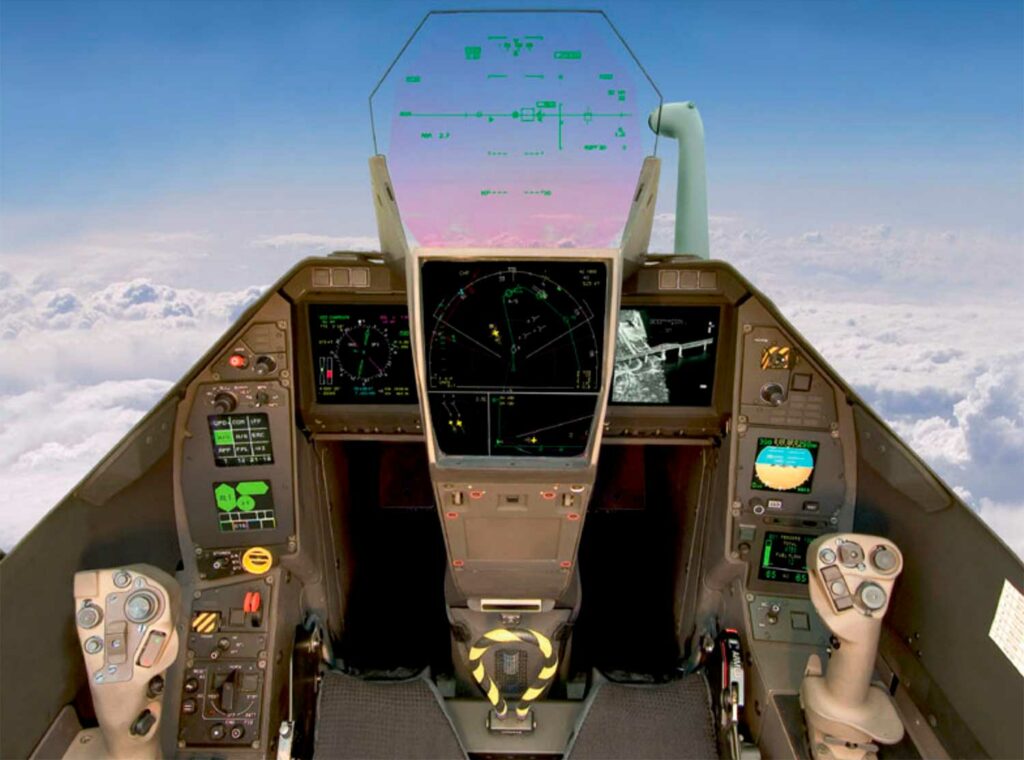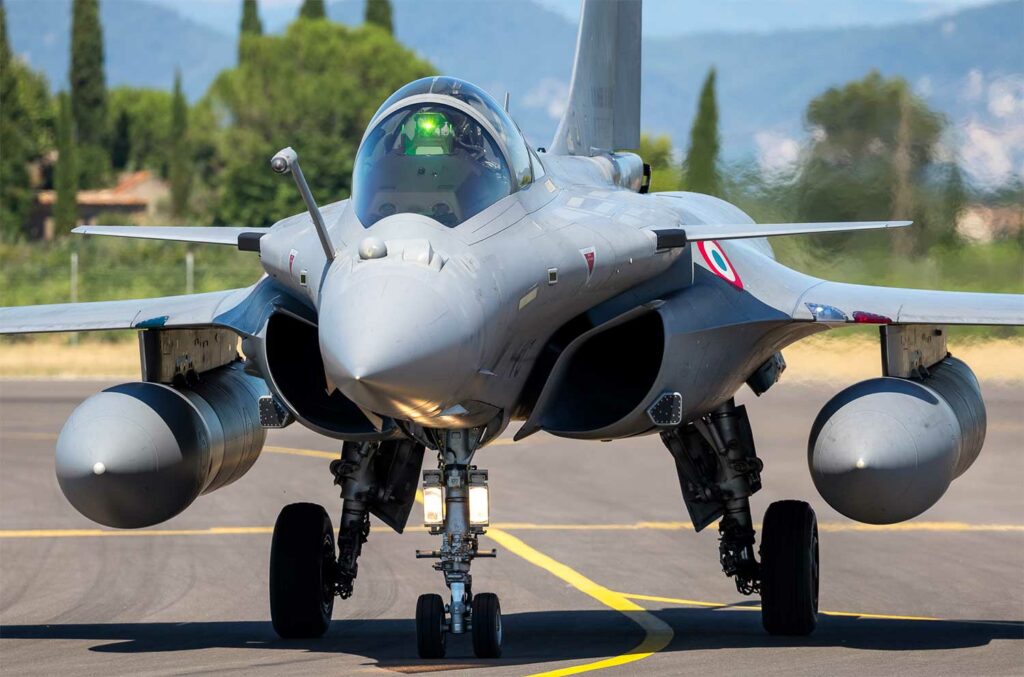
The Rafale’s fly-by-wire control: artificial stability, inertial loop, load steps from -3.2 g to +9 g, terrain following modes, and avionics redundancy.
The Rafale’s fly-by-wire control system provides the artificial stability essential for an aircraft designed for aerodynamic instability. It handles the stability loop, load factors from –3.2 g to +9 g, terrain following modes at low altitude and a redundant avionics architecture. This technical article is intended for a specialist audience: aeronautical engineers, test pilots and avionics system integrators. It details the flight computer algorithms, the role of each digital channel, the operational limits, and emergency scenarios in the event of failure. Using precise figures from technical documents, we take an in-depth look at how the Rafale achieves exceptional maneuverability, high-load flight performance, and automatic terrain following. You will gain a clear understanding of this advanced digital control system and its operational value.

The Rafale’s fly-by-wire digital flight control system
The Rafale uses a fully digital triplex fly-by-wire system, supplemented by an analog channel. This digital flight control system is essential for maintaining the stability of an aircraft designed to be aerodynamically unstable at low speeds. The aircraft cannot remain on a stable flight path without automatic correction loops. The pilot only gives flight path instructions; the flight computer generates the commands to the actuators on the control surfaces. Three digital computers work simultaneously and cross-check each other. An analog channel is used only as a backup in the event of a major failure. In this mode, the canards are neutralized and the flight envelope is considerably reduced to ensure a safe return to base. This architecture ensures very high availability even in degraded scenarios. The system is fully integrated with the engine controls and weapons system, ensuring complete consistency of avionics tasks.
Artificial stability loop and high load capabilities
The Rafale can withstand load factors ranging from –3.2 g to +9 g, with a peak of +11 g in emergency situations, such as during aerobatic demonstrations. This performance is made possible by the artificial stability loop. This calculates in real time the corrections needed to counteract the effects of natural instability. It acts mainly in pitch, roll or sudden angle of attack variations. For example, during a tight turn at high angle of attack, the pilot can request a tight turn while maintaining stable control. The system then automatically controls the control surfaces in a matter of milliseconds. The Rafale can descend at very low speeds (less than 30 knots, or approximately 55 km/h) while remaining controllable, enabling very short approaches during carrier landings or STOL (Short Take-Off and Landing) operations. These characteristics are rare in this category of aircraft.
Terrain following mode for low-altitude flight
One of the advantages of the fly-by-wire system is the automatic management of terrain following mode. This mode allows very low-altitude flight by following the terrain in real time, thanks to an inertial loop coupled with sensors (altimeter radar or LiDAR integrated into the RBE2 radar). The computer adjusts the trim and thrust to maintain a constant height of a few dozen meters above the ground. The Rafale can thus carry out penetration missions less than 100 meters above the ground. This mode reduces the pilot’s workload in demanding scenarios. The system simultaneously manages lateral and longitudinal acceleration, maintains lateral stability and protects the pilot from areas with high relief or obstacles. This capability is particularly useful in air-to-ground interdiction or close support missions in a contested environment.
The Rafale’s redundant avionics architecture
The heart of the flight system is based on three independent digital computers. Each channel executes commands in parallel. A fourth analog channel provides emergency transition if all three digital channels fail. In backup mode, the canard control surfaces are neutralized to simplify flight control laws, maneuvers are limited to ±4 g and reduced speed, but safety is ensured in emergency conditions. The hydraulic systems are also dual-circuit at 350 bar each, with redundant Messier-Bugatti pumps. The electrical power supply is based on two Auxilec variable alternators rated at 30 to 40 kVA. All of these redundancies guarantee superior reliability compared to similar systems. The avionics are integrated into the IMA (Integrated Modular Avionics) system, which combines the fuselage, sensors, data management, and pilot interface. In the event of a partial failure, the remaining computers maintain the mission or enable a return to base.

Operational impacts and critical considerations
These systems give the Rafale exceptional maneuverability, robustness, and tactical adaptability. Automatic trim calculation, combined with automatic flight modes, allows the pilot to focus on the mission rather than on fine piloting. However, this complexity requires rigorous maintenance. The quality of the software and its validation are essential to prevent any software failure in flight. Tests conducted in Thales simulators show that the system can withstand partial failures without loss of control. Nevertheless, the use of electronic components requires enhanced cyber resilience, as attacks or code corruption could theoretically compromise flight safety. It should also be noted that certain failures require an immediate return to analog mode, reducing performance. Specific training for maintenance personnel is necessary, as it is no longer sufficient to check mechanical parts: it is now necessary to diagnose computers and software updates.
The future F4 standard and beyond provides for software upgrades to these flight controls, including integrated coupling with allied drones and cooperative mission management. These developments further emphasize the need for reliable digital control.
War Wings Daily is an independant magazine.